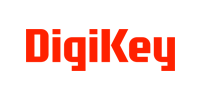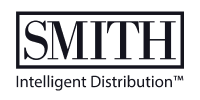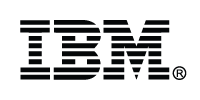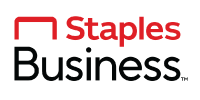How Does IBP Influence Decision-Making in Demand Planning?
What you’ll learn:
- Why integrated business planning is important for resilience and competitive advantage
- How procurement professionals use IBP for demand forecasting
Integrated business planning (IBP) has shaped the demand forecasting methods many procurement professionals use. This involves aligning a company’s business goals with all its operations, from product development to marketing to finance.
Procurement specialists who engage in IBP demand planning often find forecasts are more accurate because multiple parties and departments can contribute to them. Additionally, some other benefits include the ability to participate in decentralized planning, which can reduce lag and significant inaccuracies. Moreover, organizations using IBP enjoy holistic operational views, helping decision-makers see what works well and where the most room for improvement exists.
While looking for the most appropriate demand forecasting methods, some procurement professionals have also realized that artificial intelligence complements IBP and are eager to discover the most effective ways to bring AI into the workflow. How can people apply integrated business planning tools to become more confident decision-makers when faced with pressing procurement challenges and the intricacies of forecasting demand?
Anticipating Consumer-Driven Demand Variations
Accurately predicting what customers want is particularly challenging in industries such as cosmetics and apparel. Styles, colors and trends can shift quickly, making a once-intensely desired item fall out of favor within months. Regional differences can introduce additional complications, such as if certain areas experience unseasonable temperatures and necessitate shifts in what people wear at particular times of the year. Celebrities and influencers can similarly drive interest and purchases, but the effect’s time frame may be relatively short.
These challenges have caused executives to become more interested in learning about the benefits of integrated business planning and potential demand forecasting options. Such was the case with the cosmetics brand Estée Lauder. Executives have reportedly started using IBP tools and AI to improve inventory-related decisions. They hope these new resources will aid demand planning while curbing issues like excess and obsolescence.
Additionally, the tech rollout is enterprise-wide and global, suggesting leaders are willing to go all-in to achieve the expected improvements. It is easy to see why the cosmetics industry is an excellent fit for IBP demand planning when decision-makers allow it to affect their conclusions. For example, the Estée Lauder coverage indicated the company would use technology to determine when to deploy products or how to position them.
Relatedly, there is a tremendous amount of variation in the cosmetics industry, whether for shades of eyeshadow, lipstick and foundation or the number of low-waste, vegan-friendly or long-wearing products. Product availability changes can also significantly impact consumer behavior.
Brands also cater to people in particular life stages, such as teens and 40-somethings. Excelling at demand planning means knowing which items will sell the best overall and whether it makes sense to launch them in particular parts of the country or world before planning larger rollouts.
Experiencing the Benefits of Integrated Business Planning
Many leaders interested in IBP want to feel confident that it will help them meet their demand-planning goals and allow them to analyze data in new ways. Executives who consider information from multiple departments when making critical procurement decisions are more likely to have balanced, more accurate pictures of what is going on inside their companies.
People affiliated with Blue Diamond Growers, an almond producer cooperative and marketing organization, realized they wanted to transition into a digital-driven organization. That aim aligned with many of the challenges of being a dual-armed entity. One business line was concerned with selling almond milk, snack nuts and ingredients, and another was involved in selling almonds to consumer packaged-goods companies.
Before executives started using an integrated business planning suite, they spent up to six hours each day manually considering various demand-related scenarios. Now, that task takes only 10-12 minutes, and employees can quickly shift their products to accommodate sudden supply issues or delivery constraints.
Although Blue Diamond’s leaders still set aside time each month for demand planning, they can also accelerate the pace to occur daily or even weekly as circumstances change. That was the strategy adopted during the COVID-19 pandemic, particularly as leaders realized that real-time planning capabilities for supply chain and procurement needs were not mere luxuries but necessities.
In 2023, Blue Diamond’s executives began using their tech tools to address the challenges of rising air freight costs. They realized the importance of allowing the logistics and financial planning departments to collaborate, even though those business areas had not previously pooled their knowledge and resources this way. IBP demand planning and related tasks make businesses more resilient in challenging times.
Succeeding Through Better Operational Awareness
Leaders who sharpen their demand planning skills will find that improved accuracy for future revenue and expense planning is one of the most significant benefits they experience. Executives who become more familiar with demand forecasting methods typically appreciate options that will allow them to prepare for various potential scenarios. That is one reason why digital twins, data analysis platforms and advanced modeling suites have become so popular as decision-makers try to remain relevant and competitive in an ever-changing world.
In one case, demand planners at the chemical company DuPont realized the world’s unpredictability meant they were flying blind while trying to do their jobs. The systems they had previously used were no longer robust enough to provide all-important predictions. Executives handled the matter by budgeting for a customized digital platform that analyzed various supply chain aspects, enabling users to rely on strategic decision-making. The resultant IBP system ingests data from global supply planners and presents them with multiple what-if scenarios.
This tool allows a single DuPont division to manufacture and distribute more than 1,000 products with better effectiveness than before workers started using it. It also has an algorithm that examines future product possibilities in nine supply chain categories across 75 locations. Since technology crunches the numbers and displays the possibilities, people can spend more time creating the most-demanded products before sending them to global locations where they will probably sell well.
This kind of IBP demand planning boosts the bottom line and makes the company more adaptable to changing needs and preferences. Leaders are more likely to respond to those fluctuations in plenty of time, making them maximally responsive.
Updating Demand Forecasting Methods
These compelling examples show why it makes good business sense to strongly consider bringing integrated business planning tools into the demand-planning process. Before taking that step, executives should determine crucial information such as the challenges they hope to solve, which metrics they will track and how many people or departments will initially use the technology.
Designing a concrete plan before choosing a technology platform or vendor will help people remain mindful of goals and reasons. They can then apply new tools in maximally effective ways to make meaningful gains now and in the future.
About the Author

Emily Newton
Emily Newton has eight years of creating logistics and supply chain articles under her belt. She loves helping people stay informed about industry trends. Her work in Supply Chain Connect, Global Trade Magazine and Parcel, showcases her ability to identify newsworthy stories. When Emily isn't writing, she enjoys building lego sets with her husband.






